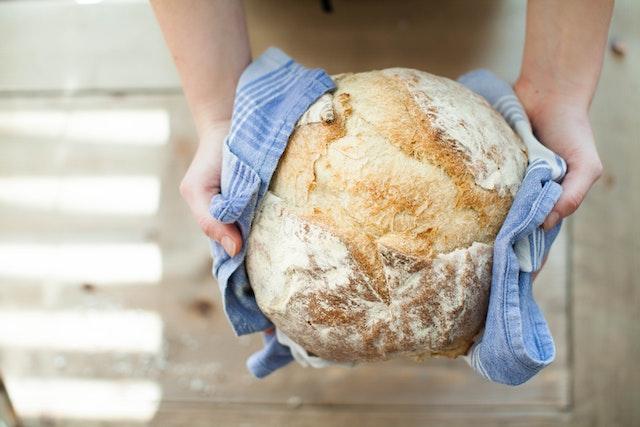 Photo by Pixabayfrom Pexels
Photo by Pixabayfrom PexelsIntroduction
There's nothing quite like the smell of freshly baked bread wafting through your home. Homemade bread is not only delicious, but it's also a rewarding and satisfying experience to make from scratch. In this article, we'll go over the basics of making homemade bread, including tips and techniques for perfect loaves every time.
Ingredients
The key to making great bread is using quality ingredients. Here are the basic ingredients you'll need:
- Flour: All-purpose or bread flour works best for most bread recipes.
- Yeast: Active dry yeast or instant yeast are the most common types used for bread making.
- Salt: Salt adds flavor and helps regulate the yeast growth.
- Water: Warm water is needed to activate the yeast and create the dough.
Optional ingredients include sugar, honey, olive oil, and various herbs and spices.
Tools and Equipment
You don't need a lot of fancy equipment to make homemade bread, but there are a few essential tools that will make the process easier:
- Mixing bowl: A large mixing bowl is needed to combine the ingredients and make the dough.
- Measuring cups and spoons: Accurately measuring ingredients is important for consistent results.
- Bread pan: A bread pan is used to shape the dough and bake the bread.
- Kitchen scale: A kitchen scale is helpful for measuring ingredients by weight, which is more accurate than measuring by volume.
Techniques
Here are the basic steps for making homemade bread:
Step 1: Mixing the Dough
In a large mixing bowl, combine the flour, yeast, salt, and any optional ingredients. Slowly add warm water, mixing the dough with a wooden spoon or your hands until it comes together into a ball.
Step 2: Kneading the Dough
Transfer the dough to a floured surface and knead it for 5-10 minutes, until it becomes smooth and elastic. Kneading helps develop the gluten in the dough, which gives the bread its structure and texture.
Step 3: Rising the Dough
Place the dough in a lightly oiled bowl, cover it with a towel, and let it rise in a warm, draft-free place for 1-2 hours, until it has doubled in size. The rising time can vary depending on the recipe and the temperature of your kitchen.
Step 4: Shaping the Dough
After the dough has risen, punch it down and shape it into a loaf. Place the dough in a greased bread pan, cover it with a towel, and let it rise for another 30-60 minutes, until it has risen to the top of the pan.
Step 5: Baking the Bread
Preheat your oven to 375°F (190°C) and bake the bread for 30-40 minutes, until the top is golden brown and the bread sounds hollow when tapped. Remove the bread from the pan and let it cool on a wire rack before slicing and serving.
Tips
Here are some tips for making perfect homemade bread:
- Use quality ingredients and measure them accurately.
- Don't overwork the dough when kneading .
- Let the dough rise in a warm, draft-free place to ensure it doubles in size.
- Cover the dough with a towel to prevent it from drying out.
- Experiment with different flours and add-ins to find your favorite flavor and texture.
- Be patient and don't rush the rising and baking process. Good bread takes time!
Variations
Once you've mastered the basic technique for making homemade bread, you can experiment with different variations and flavors. Here are some ideas:
- Herb bread: Add herbs such as rosemary, thyme, or oregano to the dough for a savory twist.
- Sweet bread: Add sugar, honey, or cinnamon to the dough for a sweet and flavorful loaf.
- Whole wheat bread: Use whole wheat flour instead of all-purpose flour for a nutty, wholesome bread.
- Cheese bread: Add shredded cheese to the dough for a cheesy, savory loaf.
Conclusion
Making homemade bread is a rewarding and delicious experience that anyone can enjoy. With the right ingredients, tools, and techniques, you can make perfect loaves of bread in your own kitchen. Remember to use quality ingredients, measure accurately, and be patient throughout the rising and baking process. Once you've mastered the basics, feel free to experiment with different flavors and variations to create your own unique and delicious bread recipes.




